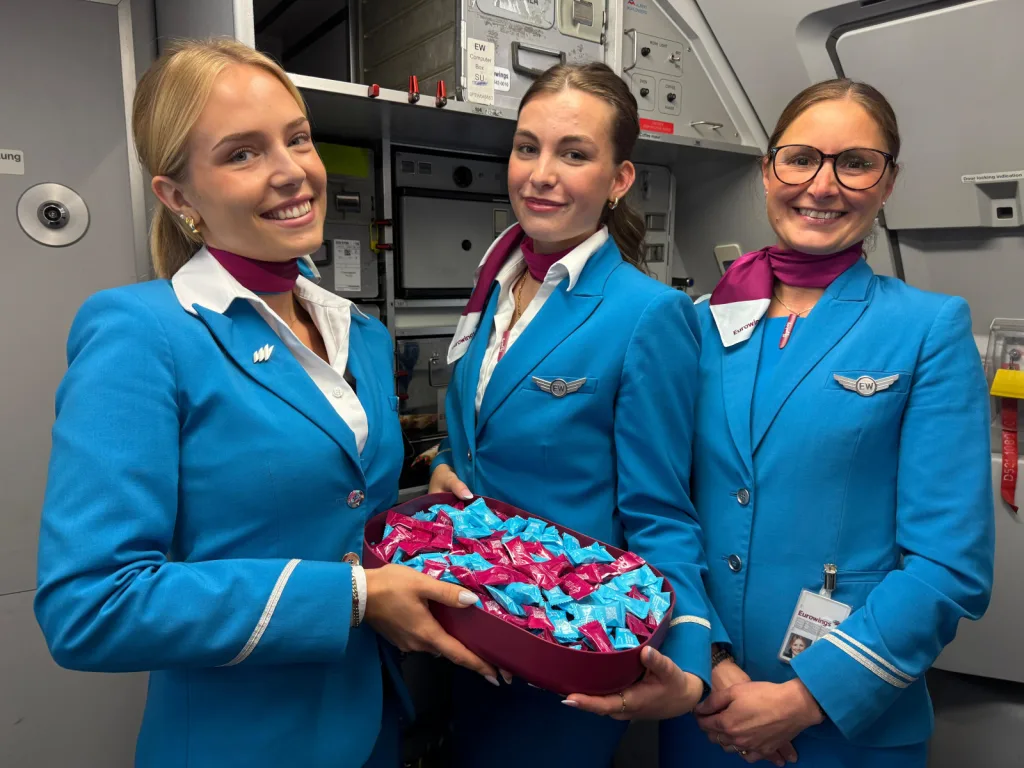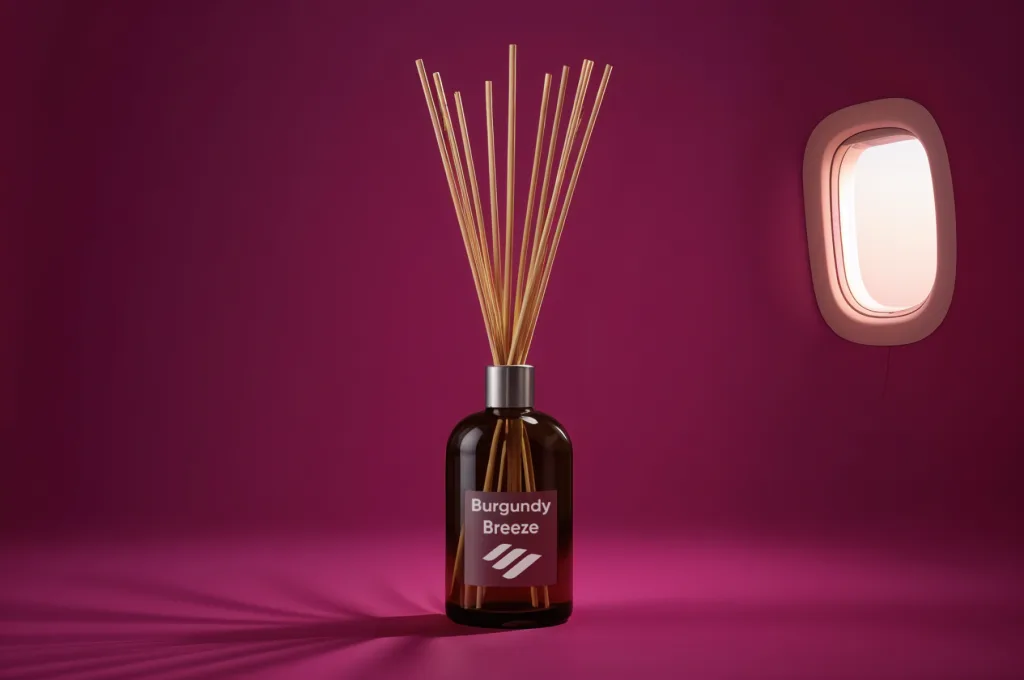Eurowings has unveiled a comprehensive sensory branding initiative.
The German carrier’s latest announcement distinguishes itself from pure low-cost operators whilst maintaining its value positioning.
Strategic Positioning Through Sensory Marketing
The airline’s introduction of its “Burgundy Breeze” fragrance, boarding music, and branded farewell confectionery represents a sophisticated approach to customer experience.

This multi-sensory strategy addresses a critical challenge facing value carriers: how to create memorable brand moments without increasing operational costs greatly.
Clemens Strauss, Head of Customer Experience, Marketing & Sustainability, frames this initiative around emotional engagement rather than service enhancement—a telling distinction that reveals Eurowings’ understanding of leisure travel psychology.
Operational Considerations and Cost Management
The choice of farewell sweets over traditional meal service enhancements demonstrates astute operational thinking.
Confectionery distribution requires minimal crew training, galley space, or service time whilst delivering a tangible brand touchpoint.
The burgundy and sky blue colour coordination with corporate branding shows careful attention to visual consistency across the customer journey.
Lufthansa Group’s Coordinated Sensory Strategy
This sensory branding approach positions Eurowings between traditional low-cost carriers and full-service airlines—a strategic middle ground that many European carriers are exploring.
The emphasis on “tangible brand experiences” directly challenges the commodity perception that often plagues budget aviation.
Eurowings’ fragrance initiative follows the recent launch of Swiss International Air Lines’ “Alpine Valley” signature fragrance in March 2025.
This fragrance became available in economy class lavatories as part of the airline’s “SWISS Senses” programme.
This suggests a coordinated group-wide strategy to differentiate subsidiary brands through sensory marketing whilst maintaining their distinct market positions.
The timing of this announcement, following increased competition in European leisure routes post-pandemic, suggests Eurowings recognises that fare competition alone may not sustain market differentiation.
The airline’s description of itself as a “value airline” rather than a low-cost carrier reinforces this positioning strategy.
Industry Implications
Eurowings’ sensory branding initiative may signal broader industry recognition that customer experience differentiation requires moving beyond traditional food and beverage offerings.
This strategic direction positions Eurowings as a potential case study for how leisure-focused carriers can enhance perceived value without fundamental changes to their cost structure.
Images courtesy of Eurowings
Nik founded Inflight Feed in 2012, blending his passion for inflight dining with over a decade of experience in the airline industry. For the past 13 years, he has travelled the world, exploring and reviewing airline meals across countless carriers.
CNN Travel, The New York Times, and BBC World News have featured Nik’s expertise. When he’s not on the ground, you’ll find him at 35,000 feet, camera in hand, capturing the unique flavours of air travel. Follow his inflight meal adventures on Instagram: @InflightFeed.

